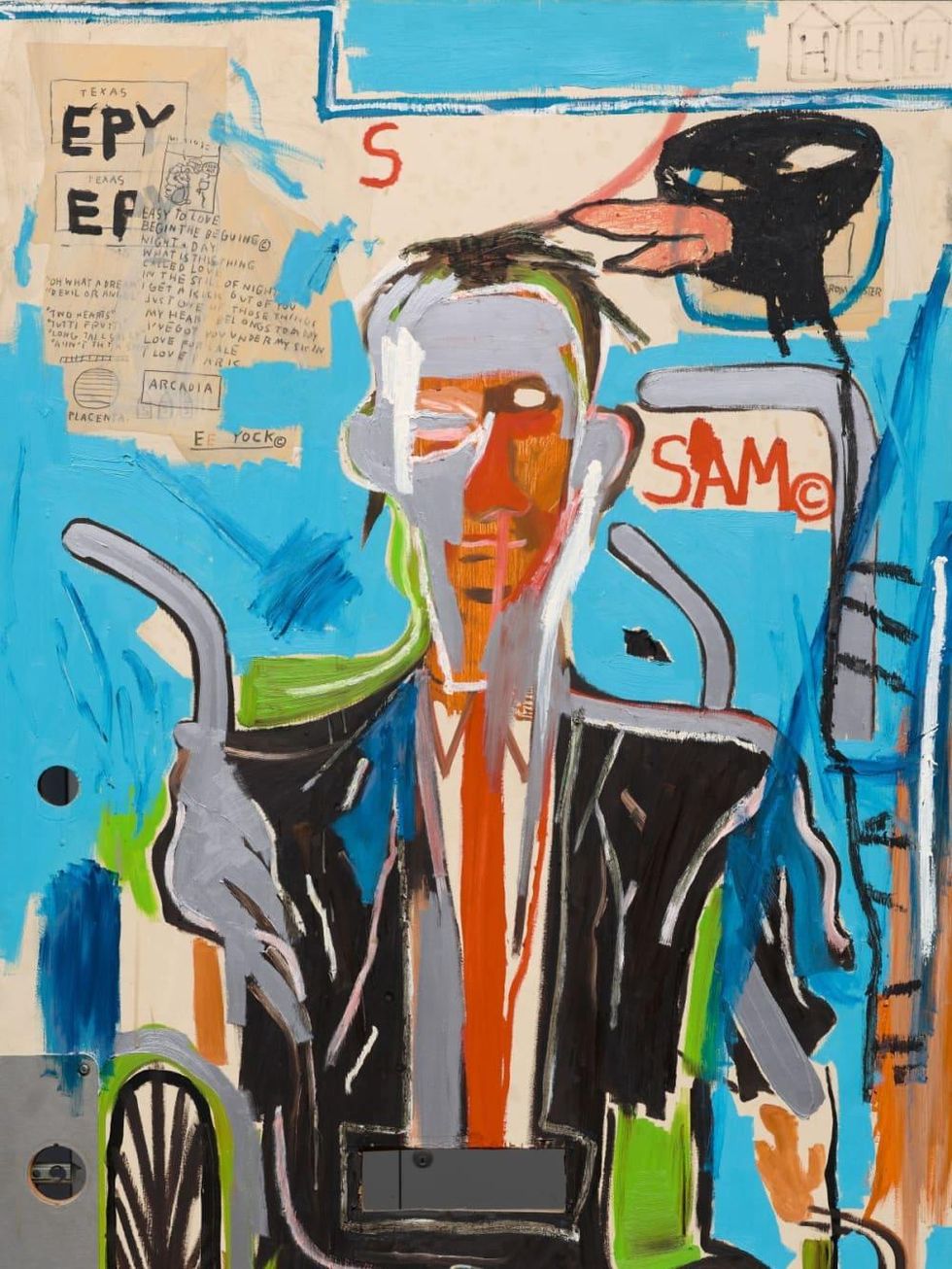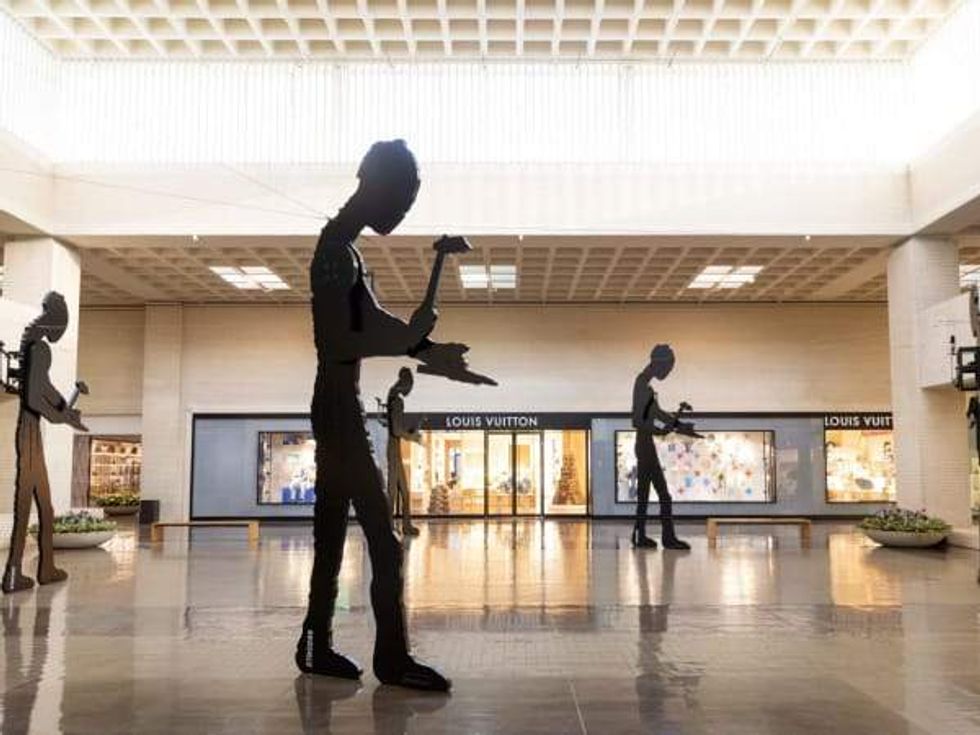Museum news
Dallas museum acquires landmark painting by iconic '80s bad-boy artist Basquiat
The Dallas Museum of Art has filled what it calls a "significant gap" in its collection with the acquisition of Sam F (1985), a painting by revered American "bad boy" artist Jean-Michel Basquiat.
The painting was gifted to the museum by the late Samuel (he's the "Sam" it's named for) and Helga Feldman and is the first Basquiat work to enter the DMA's collection. It will go on display to the public from July 4, 2021 through February 22.
“Sam F is a landmark gift for the DMA,” says Dr. Anna Katherine Brodbeck, the DMA's Hoffman family senior curator of contemporary art, in a June 22 news release. “This painting fills a significant gap in our collection and allows us the opportunity to share with audiences the groundbreaking contributions of Black and Latinx artists to the art world in the 1980s.”
Basquiat (1960-1988), a Brooklyn-born artist of Haitian and Puerto Rican descent, first gained fame in the late 1970s for the cryptic aphorisms and phrases that he and collaborator Al Diaz left on the walls of Manhattan under the tagged pseudonym SAMO, the release notes. He turned to more traditional painting methods in the early '80s, "working on salvaged materials, canvas, and paper to merge the graphic lexicon of graffiti with art historical conventions of portraiture and still life," eventually becoming one of the most celebrated artists of that decade.
Sam F came along when a 24-year-old Basquiat visited Dallas in 1985 to attend the DMA’s opening reception for the exhibition "Primitivism in 20th Century Art: Affinity of the Tribal and the Modern," organized by the Museum of Modern Art. The artist stayed at an apartment building for several weeks and regularly visited with the Feldmans, who lived in the same complex.
As Basquiat often painted on salvaged materials, he created Sam F in oil on a door from the Dallas apartment building in which he was staying. "The expressionistic portrait of Samuel exhibits Basquiat’s characteristic use of dense, meaning-laden text and imagery drawn from multiple sources, including pop culture figures, music and literature, and art historical iconography, among others," the museum notes.
Basquiat — dubbed a "bad boy art star of the 1980s" — died in 1988 of a drug overdose at the age of 27. His life as a troubled but brilliant artist who chased fame and often encountered racism in the art world was the subject of articles, books, and films.
A 1996 film about his brief life called Basquiat received critical acclaim. A documentary called Jean-Michel Basquiat: The Radiant Child was released in 2010 and featured never-before-seen interview footage from 1986, the year after Sam F was painted.
In 1993, about five years after his death, the DMA presented "Dallas Collects Jean-Michel Basquiat," a focused exhibition of 17 of Basquiat’s works in private collections in Dallas, including Sam F.
With its connection to the city, the museum says the DMA is the perfect permanent home for the work.
“We are honored to have this supremely important artist represented in our collection by a work that has such a special connection to our city and our museum,” says Dr. Agustín Arteaga, the DMA’s Eugene McDermott director. “As a work of art, the painting is an excellent example of Basquiat’s iconic style. As a treasured object, its history is a testament to the deep generosity and support of Dallas patrons for contemporary artists and the city’s arts institutions.
"As it is a beautiful new acquisition, we are thrilled to share it with our community almost as quickly as we received it.”




 Guy Fieri and Oren Salomon Courtesy photo
Guy Fieri and Oren Salomon Courtesy photo  Tom Cruise in Dallas Tribal Cafe
Tom Cruise in Dallas Tribal Cafe  The 2026 FIFA World Cup will be played at AT&T Stadium in Arlington and other venues in the U.S., Mexico, and Canada. Photo courtesy of CONCACAF
The 2026 FIFA World Cup will be played at AT&T Stadium in Arlington and other venues in the U.S., Mexico, and Canada. Photo courtesy of CONCACAF  Hammering Men, 1982 NorthPark Center
Hammering Men, 1982 NorthPark Center